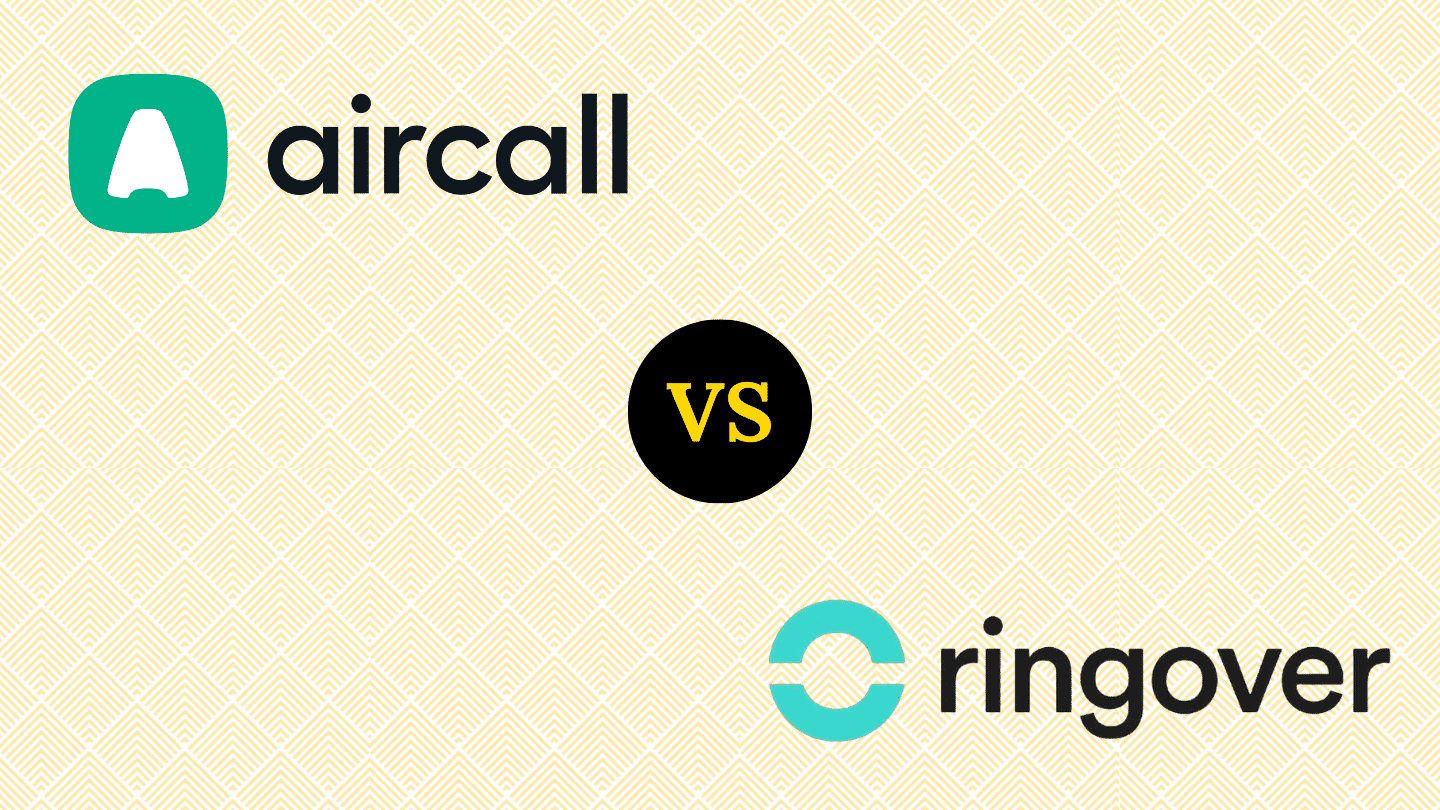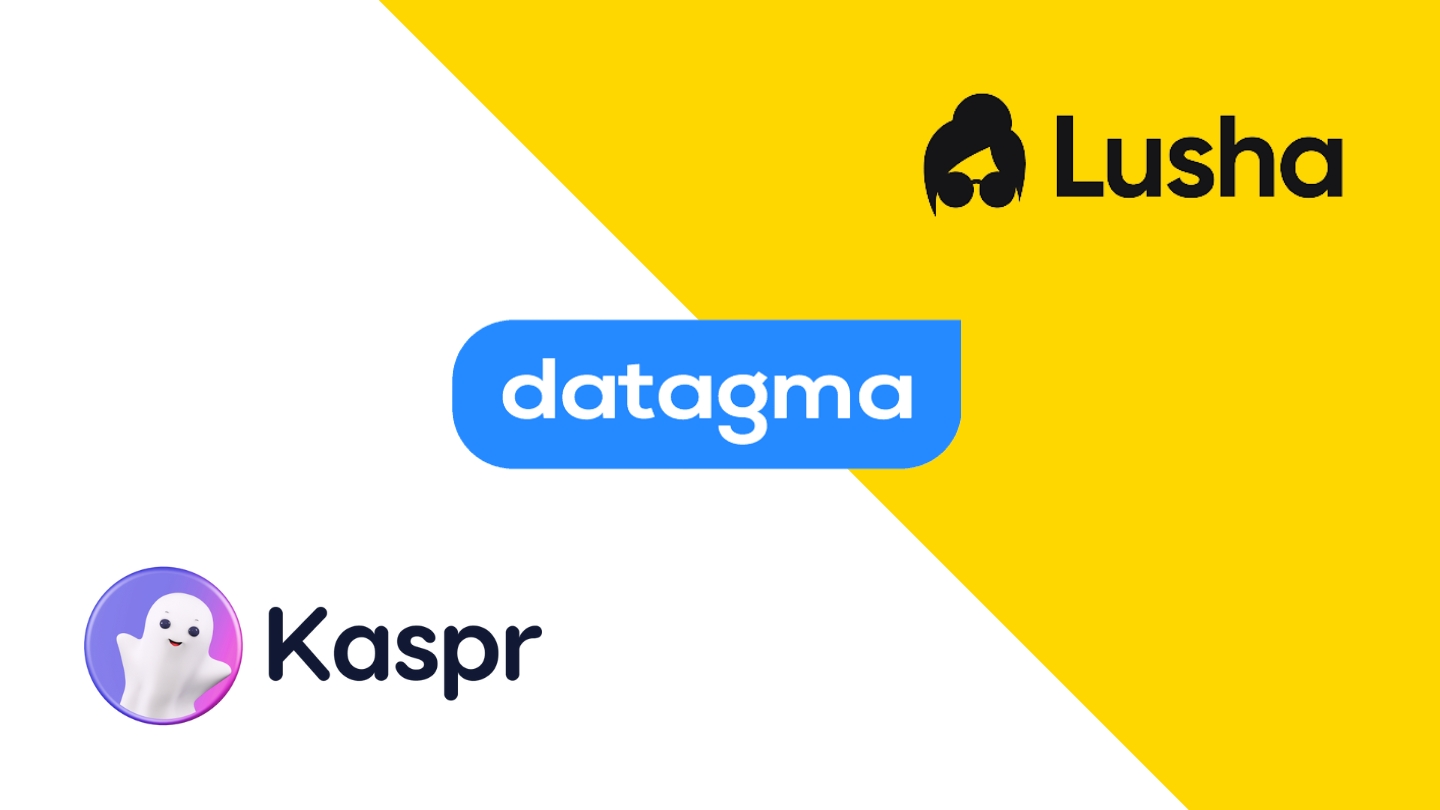The (old-school) telephone sale remains one of the most powerful ways to generate business opportunities and turn prospects into customers. Several factors influence the success of your telephone prospecting, and one of the most critical is your ability to craft an effective sales script.
Writing a compelling sales script can be a challenging task, especially if you’re new to it.
In this guide, we’ll reveal some key ingredients that can make all the difference and provide 10 proven sales script examples for various scenarios.
Sommaire
What is a telephone sales script? Definition & key structure
Before diving into concrete examples, let’s first define what a telephone sales script is in the context of prospecting.
A sales script (sometimes referred to as a call script, though this term is broader) is a structured conversation guide that helps salespeople navigate their interactions with prospects over the phone. Essentially, it serves as a framework that outlines the key phases of the conversation to maximize the chances of conversion.
The goal of a script isn’t to impose a rigid dialogue but to provide a strategic, adaptable framework that allows for a natural and persuasive exchange.
An effective telephone sales script typically follows this structure:
- A strong opening line to grab attention
- A well-contextualized introduction explaining the reason for the call
- A permission-based approach to qualify the prospect
- Targeted questions to assess needs and potential
- A concise, compelling value proposition
- A clear wrap-up with defined next steps
You can tailor this framework to fit your specific audience and offer while maintaining a logical flow.
The key challenge is striking the right balance between structure and flexibility. The best sales scripts provide a strong foundation while allowing enough adaptability for a natural, engaging conversation.
Is it really necessary to use a sales script?
Many salespeople wonder: is a sales script truly useful, or does it risk making calls too rigid and robotic?
Let’s be clear: the goal of a sales script is not to turn your team into machines mindlessly reciting a pre-written text.
As we’ve seen, a sales script shouldn’t be a rigid set of rules but rather a strategic guide. It structures the conversation, supports the salesperson, and ensures a clear and impactful message—just like most sales processes. However, a good script isn’t meant to be followed word for word. It must be flexible and adaptable.
Moreover, an effective salesperson doesn’t just read a script—they internalize it, make it their own, and adapt it to their style. They know when to stick to it and when to deviate to create a natural and engaging conversation. This is why training and practice are essential. A great script is only useful if the salesperson knows how to leverage it effectively.
A well-designed sales script provides structure without restricting the natural flow of the conversation.
Sample sales script #1: The opening call (Breaking the ice)
The first contact is often the trickiest. You only have a few seconds to capture the prospect’s attention and encourage them to stay on the call—without coming across as pushy or intrusive.
The most common mistake? Jumping into a sales pitch too soon, which immediately puts the prospect on the defensive. Instead, the goal is to take a natural, engaging approach that sparks curiosity and builds trust.
Salesperson: “Hello [Prospect’s Name], this is [Your First Name] from [Your Company Name]. I hope you’re doing well.”
(Pause to let the prospect respond. If they answer positively, continue. If they ask why you’re calling, don’t take it personally—it’s a natural reaction.)
Salesperson:
“I’m reaching out quickly because I noticed that [mention a relevant observation about the prospect’s company or industry challenge]. At [Your Company Name], we help businesses like yours [summarize your key value proposition in one sentence].”(Pause to gauge the prospect’s reaction. If they show interest, proceed.)
Salesperson:
“Before we go any further, is this a topic that’s currently relevant for you?”(Let the prospect respond. If they express interest, continue.)
Salesperson:
“Great! Let’s schedule a quick 10-minute call to explore whether and how we can help. What time works best for you this week?”
Sample sales script #2: The qualification call (Detecting the right prospects)
Having an initial exchange with a prospect doesn’t necessarily mean they’re ready to buy. Before making any proposal, you need to understand their situation, needs, and challenges.
A good qualification call shouldn’t feel like an interrogation. Instead, it should be a structured yet natural conversation where the prospect feels heard. The goal is twofold: to confirm they’re the right fit for your offering and to pique their interest in learning more about your solution.
Here’s an example of a sales script designed for effective qualification:
Salesperson: “Hello [Prospect’s Name], this is [Your First Name] from [Your Company Name]. I hope you’re doing well.”
(Pause to let the prospect respond.)
Salesperson:
“I’m reaching out quickly because I noticed that [mention a relevant observation about the prospect’s company or an industry challenge]. We work with similar companies to [summarize your key value proposition in one sentence], and I wanted to learn more about your current situation.”(Pause to let the prospect react.)
Salesperson:
“Before we go any further, could you share how you currently handle [the specific problem your solution addresses]?”(Listen to the prospect’s response and adapt accordingly.)
Salesperson:
“Got it. And what are the main challenges you’re facing in this area?”(Let the prospect elaborate and dig deeper if needed.)
Salesperson:
“I see. In that case, I’d love to set up a more in-depth conversation to explore how we can help you optimize [key aspect related to your solution]. Would you be available [suggest a specific time slot]?”
Sample sales script #3: The voicemail (Capturing attention in seconds)
Prospects often don’t answer calls—either because they’re busy or because they don’t pick up unknown numbers. In these cases, leaving an effective voicemail can make all the difference.
The goal isn’t just to inform them of your call, but to give them a compelling reason to call you back. A generic message will likely be ignored, whereas a short, clear, and engaging message increases the chances of getting a response.
Salesperson: “Hello [Prospect’s Name], this is [Your First Name] from [Your Company Name].
I’m leaving you a quick message because I’ve identified an opportunity to help you [summarize a specific and relevant benefit for the prospect].If this sounds interesting, I’d love to have a quick chat.
You can reach me at [your phone number] or send me an email at [your email address].
Once again, this is [Your First Name] from [Your Company Name]. Looking forward to hearing from you!
Talk soon.”
Sample sales script #4: The second voicemail (Following up without being pushy)
If your first voicemail didn’t get a response, it might be tempting to leave the same message again… but that would be a mistake.
A second voicemail should bring new value and highlight a concrete benefit for the prospect. It needs to grab their attention differently—whether by using social proof, a compelling statistic, or a fresh angle—while remaining concise and engaging.
Here’s a follow-up voicemail script that strikes the right balance:
Salesperson: “Hello [Prospect’s Name], this is [Your First Name] from [Your Company Name].
I’m reaching out because I noticed that your company [mention a specific activity or challenge]. We regularly work with businesses like [Client 1] and [Client 2] to help them [summarize a clear and relevant benefit in one sentence].
Many of them have seen [key result: increased sales, time savings, reduced costs, etc.] within just [estimated timeframe].
I believe this could be valuable for you as well. If you’re open to a quick discussion, feel free to call me at [your phone number] or reply to the email I’ll be sending shortly.
Looking forward to hearing from you soon!”
Sample sales script #5: Navigating the gatekeeper (Getting past assistants and receptionists)
Receptionists and assistants are there to screen calls and prevent sales reps from directly reaching decision-makers. While they don’t make purchasing decisions, they do control access to key contacts.
The biggest mistake? Trying to push through the gatekeeper too aggressively or making it obvious that it’s a sales call. Instead, the right approach is to gather useful information first—such as the contact’s name and direct email—then follow up with a more personalized message.
Here’s a script designed to handle this situation effectively:
Salesperson: “Hello, I was hoping you could help me. I’m trying to reach the person in charge of [relevant department: marketing, HR, procurement, etc.].
Do you know who handles this at your company?”(If they provide a name, proceed. If not, slightly rephrase.)
Salesperson:
“Thank you! And what’s the best way to reach them? Do they prefer a direct call or email?”(If the gatekeeper provides contact details, express gratitude and end the call.)
Salesperson:
“Perfect, thanks for your help! I’ll reach out to them directly. Have a great day!”(If they refuse to share contact details, pivot to another approach.)
Salesperson:
“In that case, could you pass along a quick message for me? It’s about [specific benefit or opportunity relevant to the company]. They can reach me at [your phone number], and I’ll also send them an email to make it easier. Thanks again!”
Check out these resources to optimize your approach:
- How to find anyone’s (mobile) phone number
- Kaspr vs. Lusha vs. Datagma: Which tool is best for finding phone numbers?
- How to create an effective discovery plan
- Download our free prospecting files
- Top 10 phoning software solutions
Sample sales script #6: Handling the “Send me an email” objection
“Send me an email” is one of the most common objections in cold calling. Often, prospects say this to end the conversation without directly saying no.
The mistake would be to simply send an email and wait—because in most cases, a response will never come. The key is to accept the request while securing a follow-up call to ensure your message doesn’t get lost in their inbox.
Salesperson: “Would you be available next week for a quick chat?”
(If the prospect responds with “Send me an email,” don’t get defensive—handle it smoothly.)
Salesperson:
“Of course, I’d be happy to. Can you confirm your email address for me?”(The prospect provides their email.)
Salesperson:
“Thanks! Just to make sure my email doesn’t get buried, when would be a good time to briefly go over it together?”(The prospect suggests a day.)
Salesperson:
“Morning or afternoon?”(The prospect chooses.)
Salesperson:
“Perfect, let’s say [Day] at [Time]. I’ll send you a quick summary email along with a calendar invite. Looking forward to our conversation—have a great day!”
I also like Julien Bouic’s approach: “I’d love to send you an email, but I must be terrible at writing them because nobody ever replies. How about I call you back on Tuesday at 11:30 instead?”
Sample sales script #7: Offering free advice (Creating value from the first contact)
Providing relevant advice during the first contact can be a great way to grab a prospect’s attention and build trust.
However, this approach can backfire if your advice is too generic or poorly targeted. To make an impact, you need to do your research beforehand and offer real, actionable insights that encourage the prospect to engage further.
Salesperson: “Hello [Prospect’s First Name], this is [Your First Name] from [Your Company Name]. I hope you’re doing well.”
(Pause to let the prospect respond.)
Salesperson:
“I’m reaching out because I noticed that [specific observation about the prospect’s business]. It immediately struck me that a few adjustments could help you optimize your results.”(Pause to gauge interest.)
Salesperson:
“For example, we recently helped [Client 1] [summarize a concrete benefit linked to your solution]. In just [timeframe], they saw [measurable result].”Salesperson:
“I’d love to share some strategies that have worked well for our clients. Would you have 15 minutes next week to go over them?”
Sample sales script #8: Offering competitive insights (Positioning yourself as an industry expert)
Prospects are always interested in market trends and what their competitors are doing. By sharing valuable industry insights, you position yourself as an expert and create immediate interest.
However, simply listing statistics or general trends isn’t enough. To grab the prospect’s attention, your information needs to be relevant, specific, and naturally lead to a conversation about their own strategic challenges.
Salesperson: “Hello [Prospect’s First Name], this is [Your First Name] from [Your Company Name]. I hope you’re doing well.”
(Pause to let the prospect respond.)
Salesperson:
“I’m reaching out because we recently completed an industry analysis on [prospect’s industry], where we studied [number of companies] and identified key strategies, strengths, and areas for improvement.”Salesperson:
“For instance, [Competitor 1] and [Competitor 2] recently implemented [example of strategy or innovation], which helped them achieve [measurable result]. We’ve spotted some key trends that might be valuable for you.”Salesperson:
“Is this something you actively keep an eye on? I’d be happy to share some insights in a quick call. Would you be available [suggest a time slot]?”
Sample sales script #9: Addressing an immediate & urgent need (Leveraging urgency)
Prospects with urgent needs are often more receptive—if your message is clear and compelling. To maximize impact, you must show that you’ve identified a specific issue and provide a concrete example of how your solution can quickly address it.
Salesperson: “Hello [Prospect’s Name], this is [Your First Name] from [Your Company Name].
I’m reaching out because I noticed that your company is currently facing [mention the urgent need identified, e.g., hiring challenges, expansion, performance decline]. I imagine this is a top priority for you right now.”
(Pause to capture their attention.)
Salesperson:
“We recently helped [Client 1] and [Client 2] tackle similar challenges. Thanks to [Your Solution], they were able to [summarize a key benefit: time savings, increased leads, reduced costs, etc.] within [estimated timeframe].”Salesperson:
“I believe a quick chat could be valuable to see if this applies to your situation. Would you be available [suggest a specific time slot] for a brief discussion?”
Sample sales script #10: Selling value (Highlighting the tangible impact of your solution)
One of the most powerful sales techniques is demonstrating immediate, tangible impact. Instead of presenting your product in general terms, you want to spark curiosity and get the prospect thinking: “Am I missing out on an opportunity?”
The key is to introduce a compelling fact or statistic that resonates with their challenges. The more specific and quantifiable the example, the higher the chances of engaging them in a conversation.
Salesperson: “Hello [Prospect’s Name], this is [Your First Name] from [Your Company Name]. I hope you’re doing well.”
(Pause to let the prospect respond.)
Salesperson:
“I’m reaching out because we’ve recently helped several companies like yours [summarize your key benefit in one sentence]. In fact, we’ve identified [impactful statistic or result, e.g., X% improvement, X hours saved, X revenue increase], and I wanted to check if this might be relevant for you as well.”Salesperson:
“You may already have a system in place, but in 80% of cases, we still uncover opportunities for improvement. I’d love to discuss this with you. Would you be available [suggest a specific time slot] for a quick call?”
Check out these resources to sharpen your approach:
- Discover the best times to make prospecting calls
- 10 questions to qualify a prospect over the phone
- 9 expert tips for successful telephone prospecting
- Comparison of B2B call centers to outsource your sales prospecting
Tired of managing prospects in Excel? A good CRM can take your prospecting efforts to the next level. Check out our selection of the best free CRM tools:






